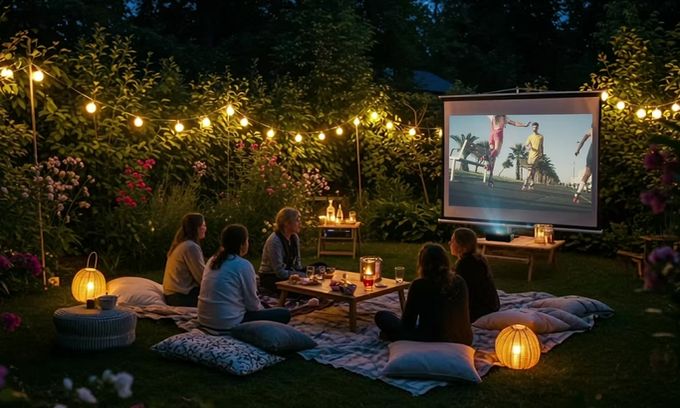The new Optoma Photon Go or ML1080UST has become the second compact ultra-short throw (UST) low-brightness projector with Full HD (1080p) resolution this year. In fact, today it’s the only competitor Philips Screeneo UL5 with similar specs and price. At the same time, UST projectors with 4K resolution and brightness from 2,000 lumens, and mid-focal Full HD/4K with any brightness are offered in abundance.
However, this aspect has a very simple and logical explanation. The ultra-popularity of UST projectors was initially due to their positioning as an alternative to a huge TV in the living room. As known, using re-reflection from aspherical mirrors, they form a huge image of 100″ or more from a distance of only a few inches.
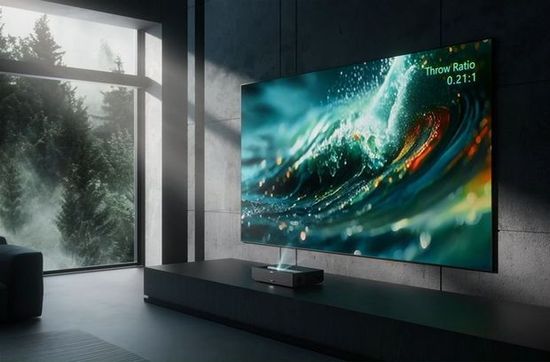
Unlike mid-focal models, they do not create problems with wires on the floor, located near the wall with the screen. Of course, ceiling mount radically solves this problem, but it’s complex, requires specialists and radically limits the projector mobility. Therefore, in recent years, many consumers have increasingly chosen a UST projector instead of a TV for the living room.
UST projectors
But a UST projector must meet certain requirements. Most living rooms, for example, in sunny California, are brightly lit by sunlight most of the time. As known, even diffused daylight makes the image dim and faded. But the projector brightness compensates for its influence. Of course, darkening solves this problem, but it’s quite troublesome and not always convenient in living room.
Therefore, the brightness of UST projectors usually varies from 2,000 to 5,000 lumens. In addition, detail on a large screen requires a fairly high resolution, which is usually 4K. Finally, high power of the light source requires a fairly large internal volume of the projector for effective heat dissipation. As a result, the vast majority of modern UST projectors are slightly bulky, weighing from 10 kg or more, use fairly powerful lasers and support 4K resolution.
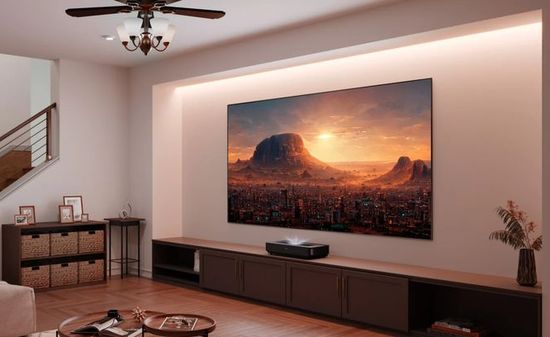
Their price ranges from $ 2,000 – $ 6,000.
The compact Philips Screeneo UL5 Full HD with 550 ISO lumens brightness and $ 830 price tag does not meet these criteria radically. But now it’s not alone. The brightness and price of the new Optoma PHOTON GO (ML1080UST) Full HD is 650 ISO lumens and $ 1,000. Both projectors use ALPD (Advanced Laser Phosphor Display) 4.0 – based triple – laser RGB light engine.
The price and size can be positioned as their main bonuses. But the relatively low brightness reduces their appeal when using the projector as a TV in the living room.
Optoma vs Philips
– price – $ 1,000 vs $ 830;
– 650 ISO lumens vs 550 ISO lumens;
– Google TV vs Android 11-based LuminOS;
– 2x 10W with Dolby Audio vs 2x 3W;
– (60″ – 100″) from (0.2 – 0.4m) Throw Distance at Throw Ratio of 0.18:1 (100″@0.4m) vs (35″ – 120″) from (0.2 – 0.6m) Throw Distance at Throw Ratio of 0.23:1 (100″@0.5m);
– Digital Keystone – Horizontal & Vertical vs Vertical;
– contrast – 800:1 (full on/off) and 2,500,000:1 dynamic contrast ratio vs 1,800:1 (full on/off);
– color gamut with triple laser RGB light source – 110% vs 108% for BT.2020 color space;
– auto focus and auto keystone with Time-of-Flight (ToF) technology vs auto/manual focus and manual keystone correction;
– built-in battery – up to 1.5 hours or 4 hours of music playback in Bluetooth speaker mode vs no;
– input lag in Game Mode – 27.1ms vs 27.2ms.
Both projectors are ideal for casual gaming.
Optoma offers Google TV & Google Assistant.
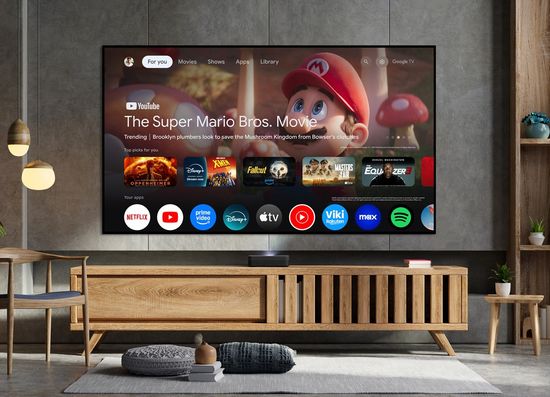
Google TV provides smoothly navigate and stream, including Netflix, Disney+ and access to thousands of apps via the Google Play Store. Google Cast delivers wirelessly cast tv shows and movies from any mobile device or tablet for multi-screen TV and audio experience.
Auto keystone adjusts misaligned images up to ± 10° horizontally and ± 5° vertically, instantly aligning images perfectly.
PHOTON GO uses Optoma DuraCore module, which is one of the most effective light engines in the industry. It has advanced laser diode cooling, an innovative dust resistant design and provides stable brightness levels throughout its service life.
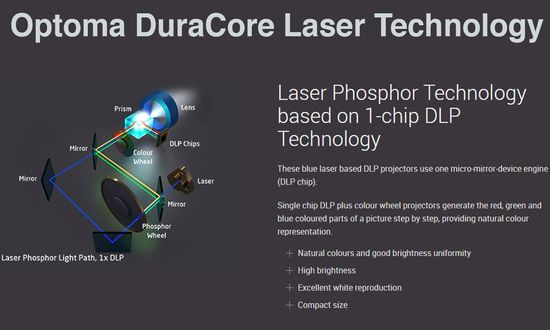
Of course, upright installation (up to 92 cm picture size) is one of the UL5’s bonuses, radially increasing its portability.
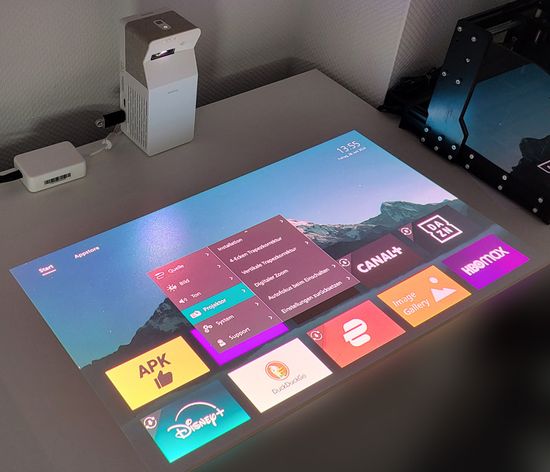
Key Features
The Optoma Photon Go is also sold under the name ML1080UST, which is almost identical to the Optoma ML1080ST (~$ 1,000, Full HD, September 2023, 550 ANSI lumens). But these are two very different models. As the ST abbreviation at the end of the name suggests, the previous ML1080ST is a short throw (ST) projector. It provides a (60″ – 100″) Image Size with a (1.0 – 1.7m) Throw Distance at Throw Ratio of 0.78:1 (100″@1.7m). The focus range of the new ML1080UST also ranges from 60″ – 100″. But it produces an image from a distance of only (0.2 – 0.4m) at Throw Ratio of 0.18:1 (100″@0.4m).
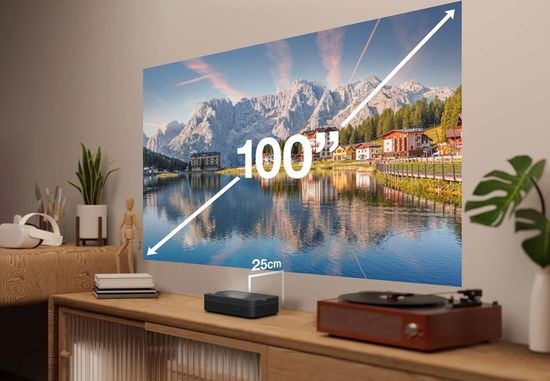
Of course, the list of differences is longer, but this is the main thing.
Design
PHOTON GO is made in the traditional style for UST projectors.
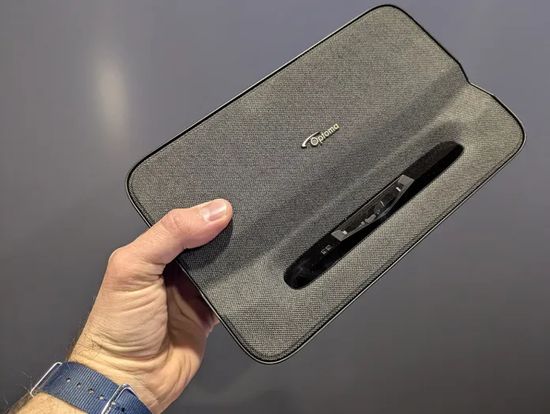
The design of the Philips Screeneo UL5 is identical to the LG PF1000U, which became the first UST projector in 2015.
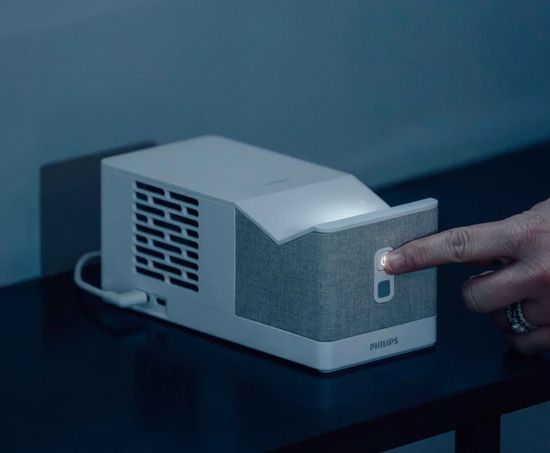
Curiously, it still successfully competes in the market ($ 1,400@1,000 ANSI lumens). However, the Screeneo UL5 is much more compact.
The different shapes make it difficult to compare the model sizes, but the Philips Screeneo is significantly lighter – (6 x 25 x 17cm)@1.7kg vs (9 x 9 x 21cm)@1.0 kg.
Resolution and brightness
Optoma doesn’t specify the chipset type, but like Philips it probably uses a 0.23-inch DMD chip from Texas Instruments (TI). Unfortunately, the chipset does not support pixel shift-based TI’s XPR technology for playing 4K content. It was developed several years ago and significantly reduced the price of 4K DLP projectors. Its operation principle is simple and elegant.
In fact, the projector divides 8 million pixels of 4K content into four parts of 2 million each. Then, the 2 million micromirrors of the relatively cheap 1080p chipset sequentially display four 1080p images, shifting them half a pixel relative to each other.
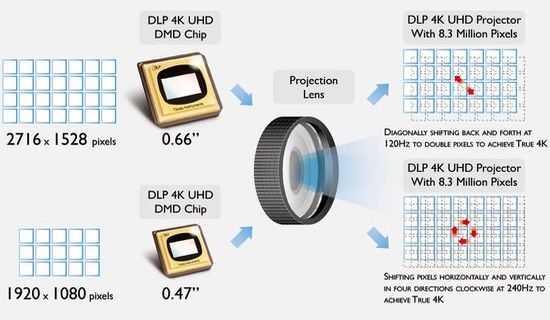
Of course, the projector displays only one 1080p image at any time. But due to the high frequency, the vision and brain perceive them as one picture with a higher resolution. The pixel shift is carried out by tilting the lens using 4 XPR module magnets.
However, high resolution is relevant only for large images. Simply put, Full HD and even HD will provide excellent detail, for example, on a 34″ screen. But with a picture size of more than 100″ diagonally, playback may be accompanied by pixel visualization (pixel grid) due to the low resolution.
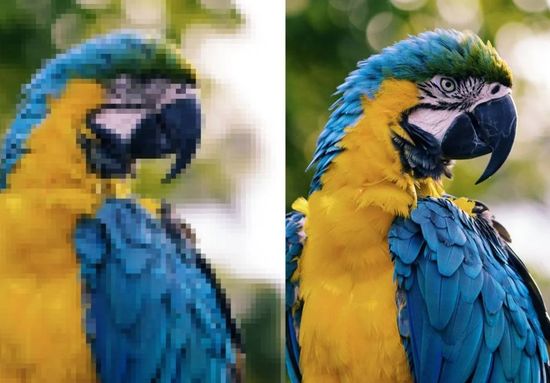
On the other hand, the relatively low brightness of the models limits the size of their images. Simply put, when enlarging the image, its color saturation will fade. In reality, acceptable image quality is unlikely to be available when exceeding 100″ even in the absence of ambient lighting. Therefore, Full HD resolution is quite in harmony with a brightness of 550-650 lumens. This combination is quite sufficient for acceptable quality up to 60″ – 80″ even in diffused daylight, or up to 100″ in the dark.
Conclusion
Optoma offers slightly higher brightness (650 vs 550 ISO lumens), Google TV vs LuminOS, more powerful sound (20W vs 6W), auto keystone, built-in battery, and DuraCore laser module. But Philips Screeneo UL5 is cheaper ($ 830 vs $ 1,000), has better contrast (1,800:1 vs 800:1 full on/off), is lighter (1.0 kg vs 1.7kg), and offers a useful upright installation for projection, for example, on the floor or any horizontal surface.
In general, their price-quality ratio seems absolutely identical. In this case, the choice may depend, of course, on discounts or personal attitude towards brands. Dutch Philips hardly needs an introduction. Optoma is a multinational corporation headquartered in Hemel Hempstead, UK. Since 2002, it has been developing and producing DLP projectors.
Of course, the marketing prospects of ultra-compact low-brightness and inexpensive UST projectors are still vague. In fact, they refuse to be positioned as an alternative to TV in the living room, for which brightness and resolution are much more important than size and weight. On the other hand, they are quite convenient as a lightweight compact portable TV. However, they will face stiff competition from phone-projectors with a built-in DLP projector. In addition, prices for mid-focal low-brightness Full HD models, including new XGIMI MoGo 3 Pro, Dangbei Freedo, JMGO Picoflix and Yaber T2 Plus are significantly lower and range from $ 300 to $ 450. But in any case, only the consumer will finally determine the demand for compact inexpensive Full HD UST projectors.
The video introduces the new compact triple-laser UST Full HD Optoma Photon Go projector.
